NATURE INSPIRED INVENTIONS --- Sonar System; and I measured the depth of the sea. It was on my Mark Twain!
The discovery of how to transmit information using light waves is one of man's greatest breakthrough since the beginning, this is also related to the introduction of travel mechnisims. Mind you, when I mean light waves, I mean any electromagnetic wave across the electromagnetic spectrum. Thus, it can be Ultraviolet, x-ray, visible light, micro waves, radio waves or infrared ray. It is due to this discovery that you can watch what is happening in a place in the world you haven't been to before on your television. What made light transmission special is it's speed. Information reaches you at the speed of 3.0 *10^8 m/s!.
But light waves has a very big limitation, which is that it doesn't travel fast and far in water as it does through air. Basically, the light ray that penetrates through a water surface travels only a maximum distance of 200m. I once read a story about a famous captain lost his treasures at sea when his ship hit an iceberg. He sought for a way to recover his treasures, so he waited till the next night, with the hope he will get sight of his treasures by shining a visible light at the sea.
His reasoning was logical. Wasn't it the same light that showed them land when they are more than 2 miles into the sea? When it was night, he commanded his crew to build the biggest fire, and he sailed to the exact spot he lost his treasure and shined it at the sea. He tried his best to look through the sea, but he couldn't see anything, his crews tried to, no result. He had to sail back home with sorrows in his heart.
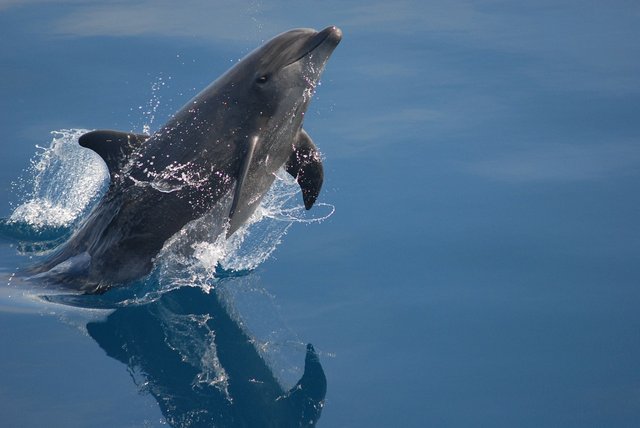
Pixabay.com: Bottlenose dolphin
This accident happened because he had no idea about the iceberg, now it have happened, there was no way for him to get his treasures back. Thus, for a long time, man was posed with these two problems, the first is to how to stay away from object under the sea that would cause his vessels harm, and the second is how to recover objects we lost on sea. Man found the solution to these problem when he studied animals like the dolphin and the bats and learnt how they detect objects in front of them without you seeing or getting close to them just by emitting sound waves. In this article we will learn how the study of the behavior of the dolphin lead to the invention of sonar system and how the sonar system works.
SONAR
Sonar is the name for the technique which uses sound propagation to navigate, and also to communicate with or even detect objects that are under the water. This was discovered by Alexander, the name Sonar is an acronym gotten from the first letters of the phrase "Sound Navigation And Ranging". The general principle is based on the fact that sound travels faster in water than on air, and sound waves can reflect off an object it encounters as it travels and return back to its source.
Thus, what the sonar system does is to send out sound waves, and measure the time it takes for the sound waves return back to the source, and by so doing, we can obtain the distance between the sound source and the object the sound reflects from, and thus it's location. Based on this principle of sound communication, man developed two technologies. These technologies are Passive sonar and the Active sonar.
The acoustic frequency used in sonar system may range from infrasonic to ultrasonic. The infrasonic is used for transmitting sound waves through a long distance but at a low resolution, while the high frequency sonar, i.e ultrasonic is used to transmit sound waves over a short distance at a high resolution. The branch of sound engineering that studies underwater sound is known as Hydroacoustic.
The sonar system is one of humans invention that is an imitation of something in nature. In nature, the idea of sonar system is known as echolocation or biosonar. Some of the animals that posses this special ability Includes, the bat, the dolphins. Let's use the dolphin as a case study.
DOLPHINS
Dolphins are one of the most widely distributed aquatic animal in the world. They fall under the order cetaceans, and about 40 different species of dolphins have already gone into extinction. The size of a matured dolphin ranges from about 5.6 ft long (and weigh about 50 kg) to about 31 ft (and weight of about 10 tons).
Most male of different species of dolphins are larger than their female. Dolphins have two limbs on the sides of their body and their bodies are streamlined to enable them to move as fast as 34.5mph. Dolphins feed mostly on fishes and squids, They have a conical teeth which helps them to catch their prey while it's moves at a great speed. They have a fat layer under their skin, known as blubber. It's job is to keep them warm in the very cold water. To call their mates or their young ones, they make sounds referred to as clicks and whistle.
All these attributes sounds amazing, yet still, none of these amazing qualities equals their well developed hearing. Unlike what most people think that this special hearing ability works perfectly only in water, the truth is that it also works perfectly in water. The accuracy of their hearing ability is so high that a dolphin can survive and even fend for itself if both of its eyes are plucked off. With this special hearing ability, they can detect the position of their prey through a process known as echolocation.
DOLPHINS AND ECHOLOCATION
During echolocation, a dolphin can emit sounds at a frequency as high as 120kHz. A normal human being hears sound within the range of 20Hz to 20kHz. Dogs and cats on their own have a hearing ability of 45kHz and 65kHz respectively. This means that dolphins have a better hearing ability than cats and dogs. Even though the speed of sound in water is about 4.5 times the speed of sound in air, the sound waves emitted by the dolphin doesn't travel more than 16 to 656 feet. The reason for that is because high frequency sound does travel a far distance in water as low frequency sounds does.
HOW ECHOLOCATION WORKS
Before we get to know how echolocation works, we need to realise that dolphins do not have vocal cords, and as a result of that, they do not have voice like us humans. But despite that, they do have special internal structures that enables them to generate sounds. To produce sound, dolphins make use of parts in their body like the larynx, the melon, the nasal air sacs, the blowhole and the lungs. The melon is the organ that is found in a dolphin's head at the upper inner area. The melon is filled with low-density lipids.
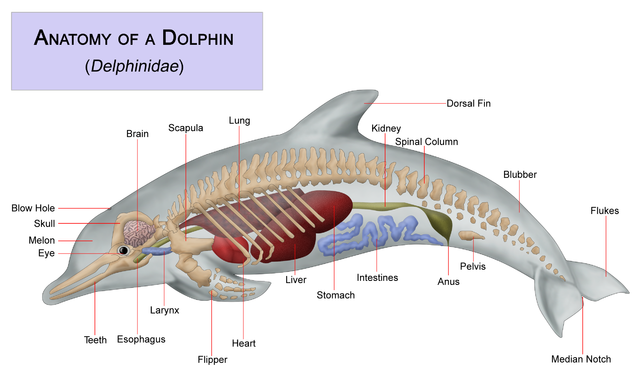
Picture by Wikipedianprolific - Wikicommons CC BY-SA 3.0
Dolphins Anatomy
The first thing the dolphin does in the process of echolocation is to open it's blowhole and then inhale. Due to this inhalation, air enters the lungs causing the nasal air sacs to swell. When the dolphins exhales, the air in the nasal air sacs resonates, and then comes out through the blowhole with pressure. As the nasal air sacs deflate, a vibration occurs in the larynx of the dolphin.
If the dolphin wants to echolocate, what it does is to emit ultrasounds referred to as clicks. It achieves this ultrasound by pushes the air that is leaving it's nasal air sacs through the lips of the nasal passages, while it opens and closes the lips. This frequent opening and closing in addition to the air pushing itself through generates a vibration at the surrounding tissues which in turn produces a sound waves. The more air passes through the respiratory cavities, the more sound is generated.
This sound that is generated needs to amplified. The needed amplification is done by the melon. What melon does is that it concentrates the pulsations in the form of sound which the dolphin emits, then, it sends them forward. To concentrate the pulsation, it groups the sound produced into beams, then it generates resonance and then amplify it. Now, the sound is high enough, thus, it releases it forward.
As this sound wave that is emitted moves forward through the water, it reflects off any object or animal it hits as it travels.
When the sound reflected off the object, (known as echo) gets to the dolphin, using a fat filled cavity at its lower jaw, it receives this echo (as information). Then using it's auditory nerves, the information is then sent to the dolphin's brain and middle ear, where it processes the information. As a result, an acoustic picture of the object the sound reflects from is created in its brain. Also, by calculating the time it took the sound to come back, the dolphin can predict with certainty the exact position of the object.
Having understood how nature dolphins echolates it's prey, let's get to see how man applied this idea he got from nature.
HISTORY OF THE SONAR
The first to realize this phenomenon was Leonardo da Vinci. One morning in 1490, after studying the dolphins, Leonardo da Vinci woke up, he picked up a metal tube and started walking towards a sea close-by. When he got there, he knelt down close to the water, and then he inserted the tube deep into the water. He then placed his ear at the outer end of the tube. When he did that, he heard the sounds of vessels moving across that ocean. The amazing thing about this is that, these vessels were far away, at at distance beyond the eye can see.
When Leonardo da Vinci died, all works about detecting vessels on and under the sea through sound waves were forgotten, it wasn't till the 19th century did man began again to research on the how sound travels through waters. During the 19th century, man came up with the idea of adding underwater bells to assist the already in place lighthouses to provide warning of hazards (e.g iceberg) for travelers in seas. In 1822, a man named Daniel Colloden discovered a way of measuring the speed of sound underwater by the use of a bell.
Yet still, there weren't any much advancement in the field of hydroacoustic, till the famous Titanic ship sank. The sinking of Titanic ship prompted the need to detect movement under water. This lead to so many research, and within a month after the Titanic sank, a meteorologist whose name is Lewis Richardson invented an echo locator. Two years later (i.e in 1914), Reginald Fessenden designed a unit that was able to detect icebergs that were within a two miles radius. It was a great invention, but it had a limitation, which was that it couldn't determine the direction where the iceberg was.
World War I lead to the invention of submarines due to the need of countries like Britain and U.S to sneak in their troops into their enemy's country. Now, with the invention of submarines came the need of locate them while they are at sea. Thus, man began to research on the sonar. This time, he was successful because he spent time in studying the behaviors of animals like dolphins, and how they communicate and detect their prey using sound. The two countries that were actively involved in the research were the United States and Britain, both of them kept it a secret from each other and the world till the end of the war. Before the end of 1923, naval vessels were already equipped with sonar device.
While the war went on, the British referred to a group as ASDIC. ASDIC was the acronym for Anti-Submarine Detection Investigation committee. The world thought that this was a group for monitoring submarines, to prevent them from invading their country, no one knew that it was a cover name for the sonar. It was until after the war that the name ASDIC was "abolished", and NATO was formed and signals for the sonar become more standardized. The new name SONAR came from the Americans.
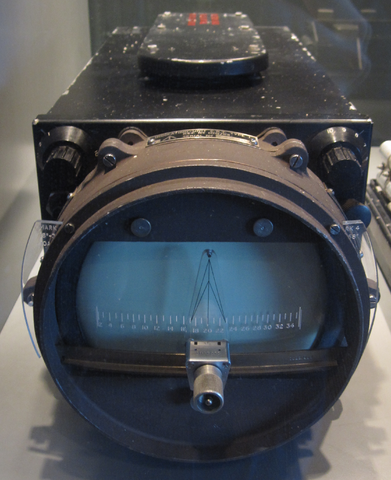
Picture by ÄDA-DÄP - Wikicommons CC BY-SA 3.0
The ASDIC
HOW THE SONAR WORKS
The speed of sound through fresh water is about 4,920 ft/s. What the sonar device really does is to measure the time it takes for the emitted sound energy to reach the bottom of the water body and return back to the surface. When it measures the time, it displays its result by blinking the light of the sonar device and also through a crystal display (LCD). Since this is a matter of distance traveled by sound, it's safe to say that as the body water becomes deeper, the time of travel of sound increases.
The Sonar has an electronic power pack which generates short pulses of electrical energy. These pulses of electrical energy are then sent to the transducer. What the transducer does is to convert these electrical pulses to pulses of a high frequency sound energy (at this point, it kind of acts like a loudspeaker). Immediately it sends this sound energy out, the transducer immediately switches over to another mode that would enable it pick up the returning echoes that is formed as the result of the reflection of the first sound energy emitted, when it hits the bottom of the sea, or an object, or fish. (At this point, the transducer acts like a microphone).
The transducer, after receiving the echo that returns to it converts this sound energy to electrical energy. This electrical energy won't be as strong as the one sent out, thus, they are passed through an amplifier so as to increase it's strength up to the extent that it can power a neon bulb, or the pixel of a LCD or LED. Thus, using the location of the flashes or pixels on the LCD we can determine the position of the object that bounced back the first sound that was emitted.
Concurrently, as the transducer is processing the amplified signal, it immediately sents out another sound signal, and the cycle repeats. The time between the emission of these sounds varies according to the unit, but the time should be enough to allow the returning echo to get to get to the transducer before another sound signal is sent. This time is not as long as it may seem. Since sound travels about 4,920 feet per second, the time for the sending and receiving of the sound is in milliseconds. This time difference between signals is known as sounding rate. A normal sounding rate for a flasher unit in a sonar is about 24 times in a second. While that of an LCD is about once in two seconds.
Note:- The time it took for the echo to return back is divided by two to get the actual time, as the measured time is really the time it took for the sound energy to reach the object and back. Thus.. mathematically, the distance of the object is 2d = vt.
where d= distance, v= velocity, t= time.
TYPES OF SONAR
Based on the above principle, man developed two types of sonar, each having it's own distinguishing features. They are the active sonar and the passive sonar.
Active Sonar
This type of sonar system can emit sound signals in form of pulse into the water. When this pulse gets emitted, if it meets an object on its path as it travels down the water, it bounces off the object and then returns back to the sonar's transducer in the form of echo. Since the transducer has the ability to receive and measure the strength of this signal that returns back as echo, it does so, and by measuring the time it takes for the signal to return back to its source, the transducer can deduce the range and orientation of the object.
Passive Sonar
This type of sonar system are basically used for detecting noise from objects like submarines and animals like whales under the water. Passive sonar can be distinguished from the active solar by the fact that they (passive sonar) do not emit signal of its own, instead, it only receives. The passive sonar is of great advantage especially for military subvessels that wants to go undetected through a sea. Apart from that, they also have an advantage of receiving sounds from these objects, with the help of other passive listening devices, they can predict the exact position of the object the sound came from.
Also: Go on a food tour of the united states by exploring guides on The foodies checklist and restaurants marker
IMPORTANCE / APPLICATION OF SONAR TECHNOLOGY
Even though that sonar systems affect aquatic lives, the sonar technology have been of great importance to man. Its application ranges from defense even to the recovery of lost objects at sea. Let's discuss briefly a bit about the application of sonar systems.
Defence
Sonar system is used by military ships and submarines to detect the presence of an enemy ship or submarine in the water. It is also used to detect torpedoes. Both the passive sonar and the active sonar are actively used for military purposes.
Bathymetric Studies
Bathymetric studies involve the measurement of the depth of seas and oceans. With the use of echo beams and multi beam sonars, man have been able to measure this depth with high accuracy. This is of great importance, because with the knowledge of the depth of the sea, we can navigate the seas and oceans more safely.
Pipeline Inspection
Before the use of sonar, man only detects leaks in pipes by digging up the pipe to check for sure. Right now, with the use of sonar, oil and gas companies can detect possible damage or detect span by using high frequency side scan sonar, thus saving us the strength and cost required to dig up the pipe.
Offshore Wind Turbines
During the installation of offshore wind turbines, we do make use of sonars with high resolution. This is so as to survey the site accurately and know if it would be wise to install the turbine there. With the use of the sonar, we can check how the sea bed is and also provide protection to the foundation of the turbine.
Search and Rescue missions
Search and rescue teams make use of sonar. Using the sonar, an object that fell into the water can be recovered. Once the object is located, with the help of the sonar, the rescue team divers are guided to exactly where the object is.
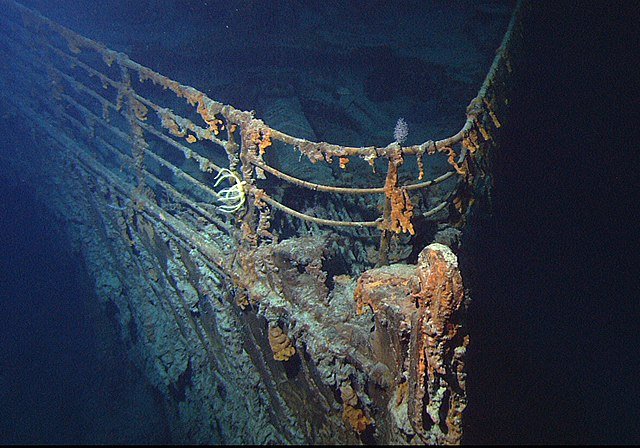
Picture by NOAA - Wikicommons CC BY-SA 3.0
The bow of the wrecked Titanic Ship
Detecting Explosive Underwater
In most countries missals, torpedoes, and even unexploded mines can be found under the sea. Probably, at the cause of laying underwater cables and pipes, these explosives might be unknowingly triggered. With the help of Sonar, these explosive can be detected and these cables and pipes can be late under the water without triggering any of these explosives.
Communication Under the water
Most importantly, ships and submarines are fitted with sonar so as to communicate with each other while at sea, and thus enabling them stay clear from each others path if the need be. Commands are even sent through this means.
CONCLUSION
Probably the greatest way of harnessing sound energy, the importance of sonar system can not be over stated as seen on the drivers checklist. The invention of the sonar system gave man unlimited access to the sea and everything in it. Right now, whenever man goes in to explore the sea, or any other water body, he goes in having a clue on what he would meet under the sea.
Lest I appear partial, I must say that man's invention and use of the sonar system has its own effect on the sorrounding, especially to aquatic lives. In January 2005, we read about the death of 34 whales along North Carolina's outer banks, and other notable events. But the advantages of the sonar system is so much, that suggesting that the world should quit using it would cause serious uproar. Thus, just like we have always done, we need to go back to nature and discover a solution to this problem.
If we take a look at all human inventions, starting from the airplane to the camera, we have seen how nature inspired their invention, and how any problem man encounters while he used the invention, he finds the solution in nature. Having know this, it is not hard to believe that man will find the solution to this problem in nature too. All he needs to do is just to pay attention, nature is always willing to reveal her secrets.
Till we meet again
Meanwhile. check out this DIY article: Shift Lock Release Button Not Working: How to Fix It.
REFERENCES
Transferring Information using Light
Application of Sonar Technology
Effects of the Sonar to aquatic animals
This article is spornsored by mechanicassistant.com
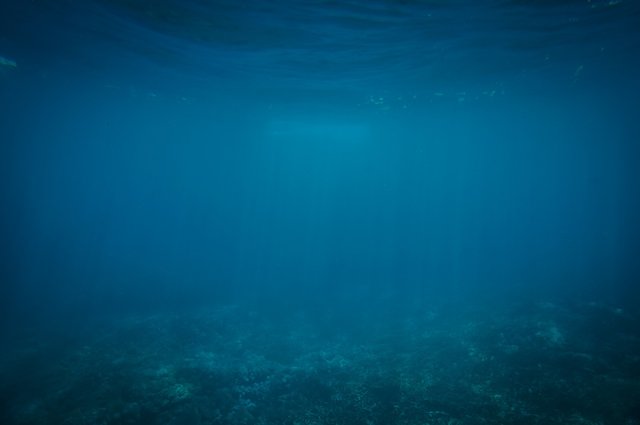
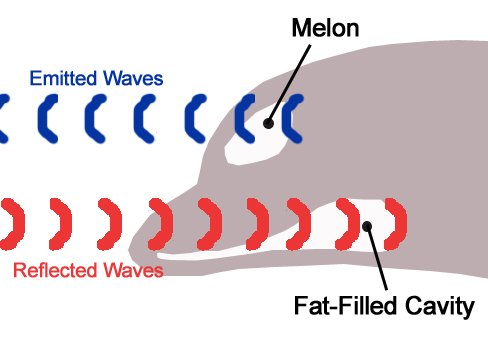
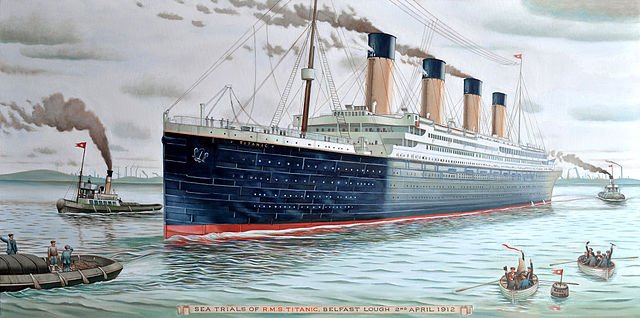
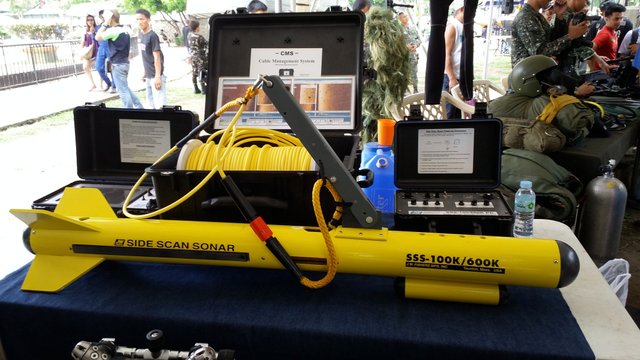
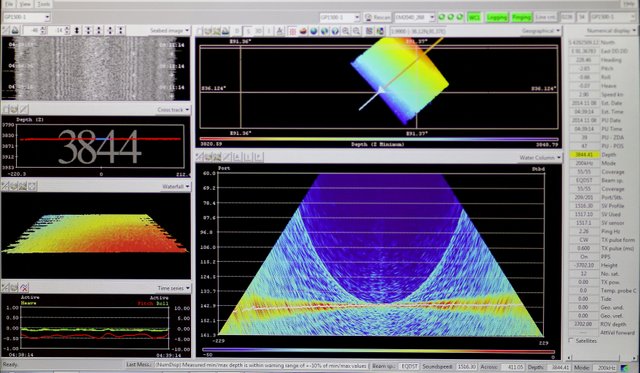

Nature inspired inventions is a great idea for a series. Looking forward to more articles on this topic.
I wonder if bats also contributed to the development of sonar as they have echolocation too.
Yeah.. They do, I just decided to use the dolphin as a test case since they are "sea related". Am glad you found the article informative, I will do my best in the next article. Thanks @tking77798..
You post made me thing about human echolocation which is something i have learned about on steem. I am sure you will like it ^^
Very nice post by the way!
Wow... I didn't know that human echolocation existed till today. The Ben Underwood story seems so unbelievable. Sending out notes and listening to the echo, just like bats.. Thank you for directing me to that article, the author did a wonderful job on the article.
Am really glad you loved the article @lemouth, Thanks.
I remember having been especially shocked when I read about it the first time. Like "wow this exists:". As a consequence, I still remember ^^
PS: yep I liked your article. Very interesting topic :)
Am honored.. Thank you.
Human echolocation is a topic that you just don't get bored of especially locating echo in mammals
It is a crazy topic :D
I don't want use crazy but it's.... Something else
Please replace crazy by exciting :)
@lemouth I have not received any steemstem upvote on my very first @steemstem post. Please do check it and encourage beginners Like me. Thank you
This is not how we work. You should read the @steemstem blog
I understand bro, I really do. It's okay, I believe the curators are still canvassing for posts
They do. But please remember, we are not a voting machine!
Hi @whileponderin! It is really an interesting post. I loved it. Specifically how you highlighted the invention of sonar from the teaching of nature's creation (dolphin)!
I loved your skills and the way of presentation! :)
Moreover, I have seen some uses of sonar as you mentioned sonar system are basically used for detecting noise from objects like submarines and animals like whales under the water. ;)
Cheers!! :)
Smiles.. @star-vc, thank you so much for your kind words, they just made my day. 😁
You are most welcome!! :)
All i can say now is that you killed it! Waooooo, very comprehensive and full of knowledge.
This is awesome. Kudos to you bro.
Will love to read more
Thanks @cyprainj.. You are a good writer too..
Nature agreeing with science theories
I wish to no more but it's not my field... Nice work here
Thanks @osariemen
To listen to the audio version of this article click on the play image.

Brought to you by @tts. If you find it useful please consider upvote this reply.
A similar concept to sonar is the doppler effect, in which the frequency of light or sound seems greater when the source is apporaching the sensor than when it's moving away from it. An example would be how an ambulance seems to grow louder as it approaches and then instantly becomes much quieter once it passes. An application of the doppler effect is by police officers with their speed detectors. Bats also use the doppler effect to determine whether they will colide with an object or not.
Very interesting. It makes sence that sound would travel faster in water than air because it is more dense. Indeed, sound travels faster yet through solid materials.
Light on the other hand travels more slowly through denser gases than air, and water. The speed of light through a vacuum is 3x10^8 m/s. Its speed through any medium, such as a liquid or gas is multiplied by its index of refraction, which is generally a decimal; yielding a smaller value, i.e. a lower speed.
This was a very informative post! Thank you!
Thank you! @nhahn93.
great one. I learnt a lot from this post. keep it up
Am honored.. @anyasiemmanuel
Nice article, but
is not true. Submarines main purpose was always fighting enemy warships and merchant fleet.
It's your opinion, but I appreciate it.. Thanks @mactro
Well, if you have any references to submarines transporting troops before WWII (not spies), then I'll be happy to learn :) And BTW, first successful submarine attack took place during American Civil War, so they were invented a bit earlier then WWI.
You have a valid point there.. I stand corrected.. Am glad you shared your knowledge with me.